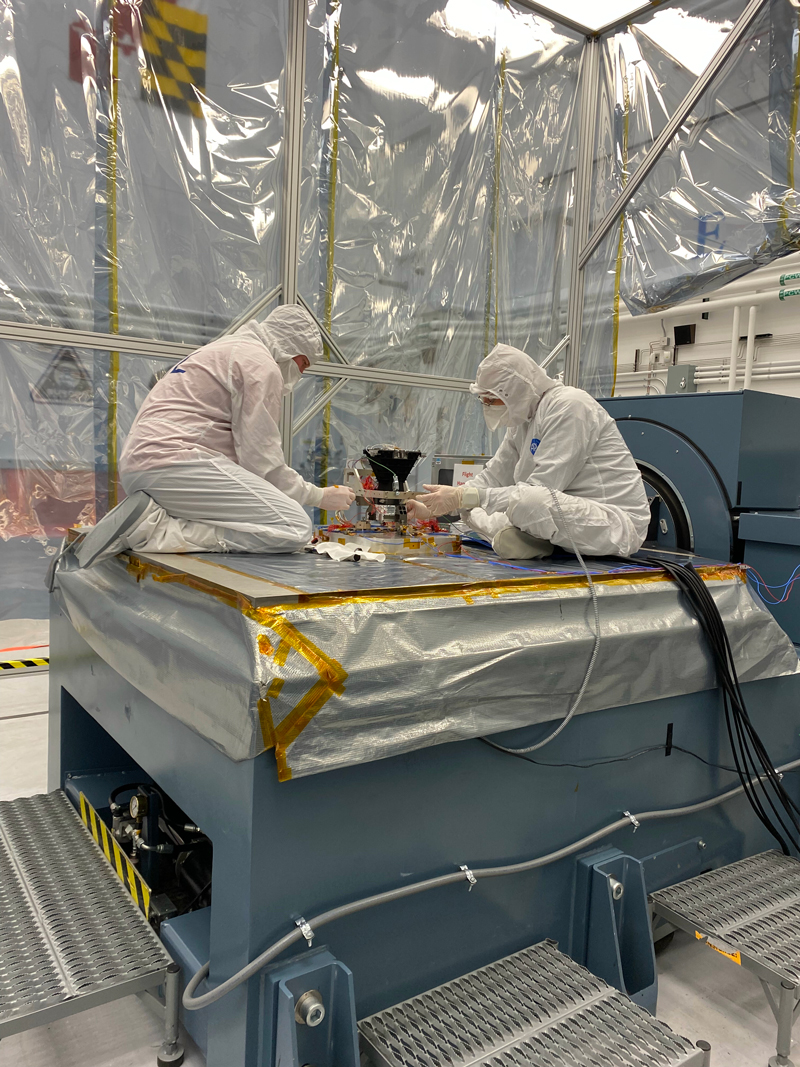All Resources
Preparing for Wide Angle Camera Vibration Testing
-sensor-assembly-large.jpg?disposition=inline)
Engineers Jeff Lees (left) and John Stinchcomb set up the Europa Imaging System (EIS) wide-angle camera (WAC) for vibration testing at the Johns Hopkins Applied Physics Laboratory (APL) in Laurel, Maryland, in January 2022. Vibration testing simulates what the instrument will experience during launch. Following these successful tests, the WAC is undergoing thermal testing to simulate temperatures the camera will endure in space during its voyage to and operations at Jupiter and its moon Europa. The camera will then be integrated with its data processing unit for end-to-end electromagnetic tests, followed by optical characterization in a simulated space environment in the APL Optical Calibration Facility. After testing, the APL team will ship the WAC to NASA’s Jet Propulsion Laboratory in Pasadena, California, for integration with the Europa Clipper spacecraft.


